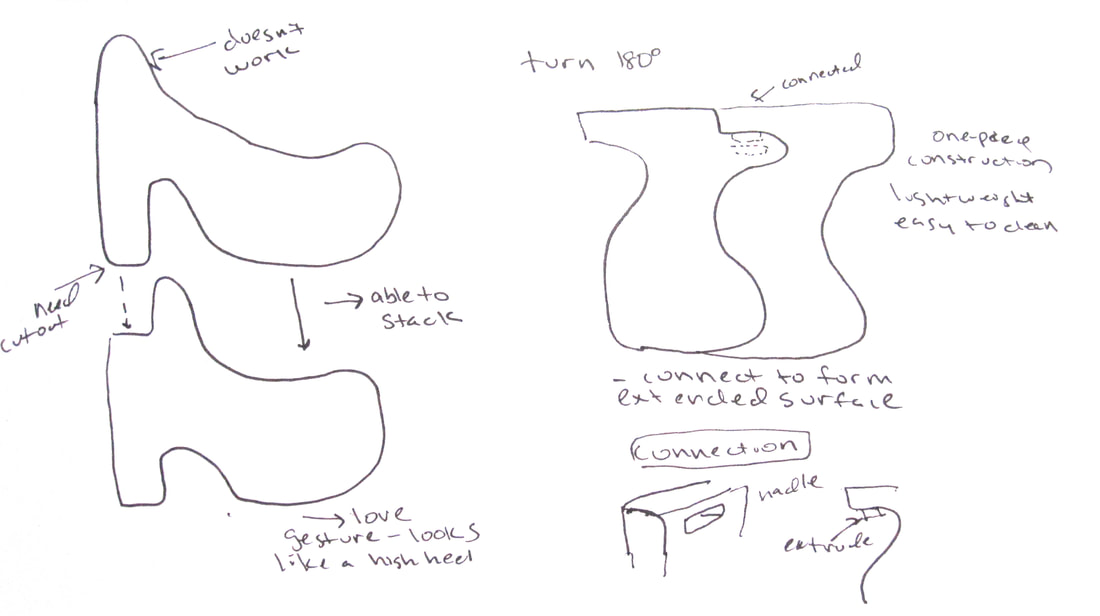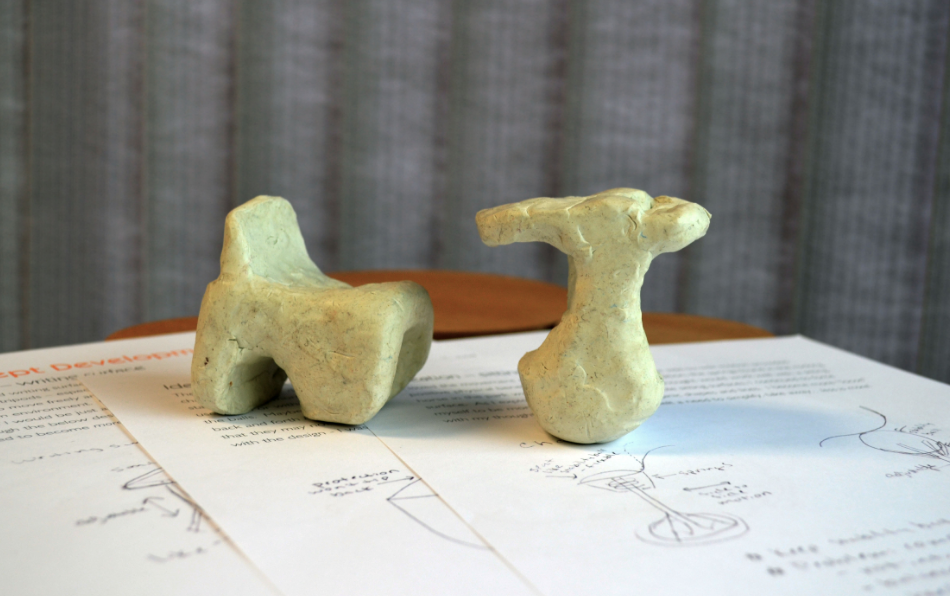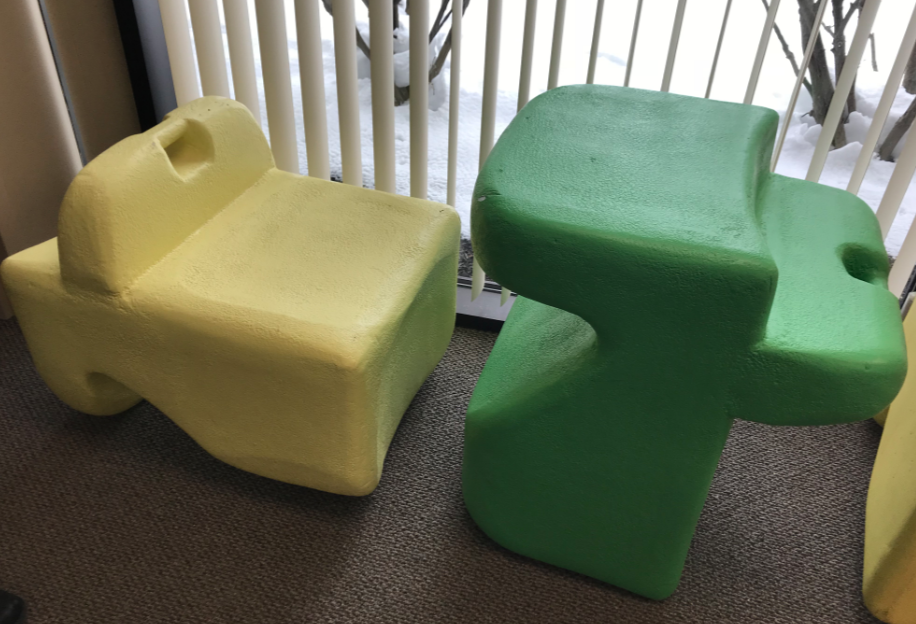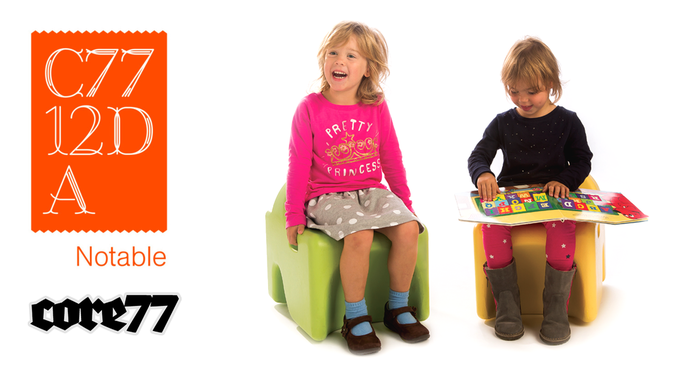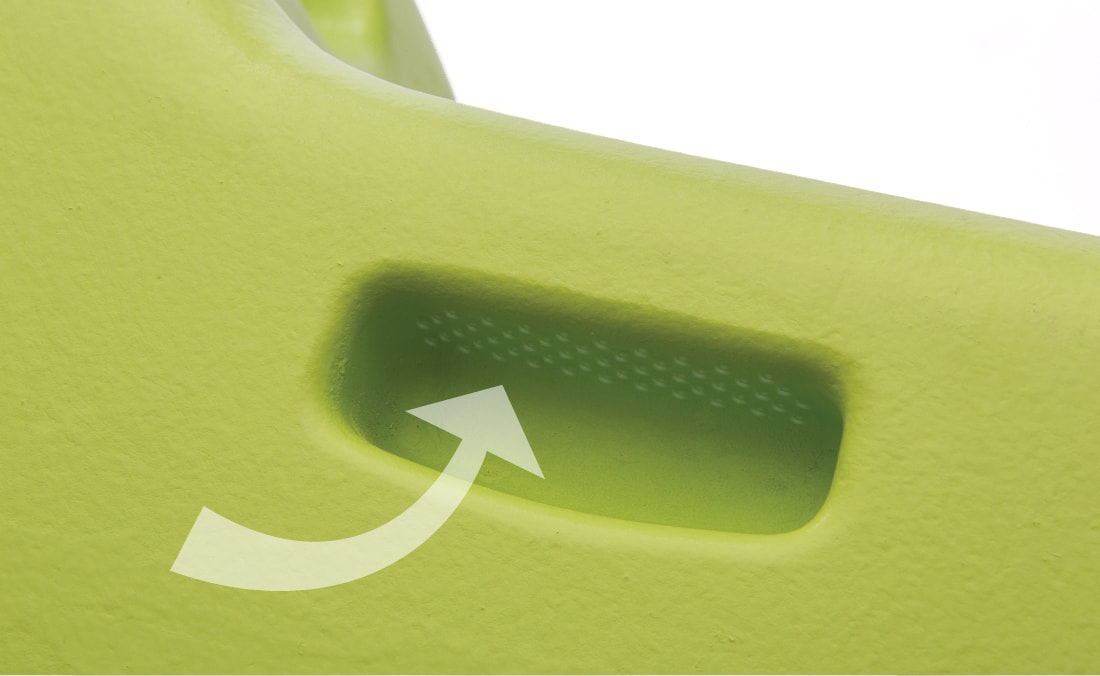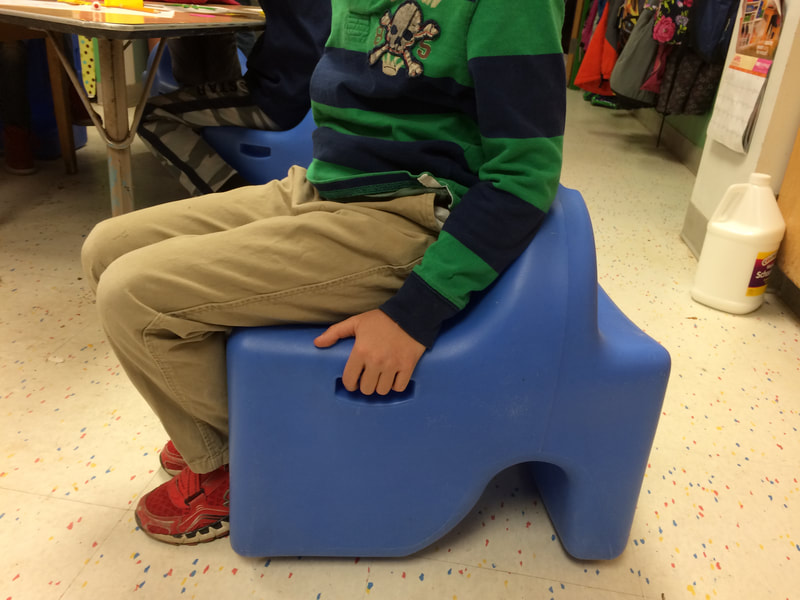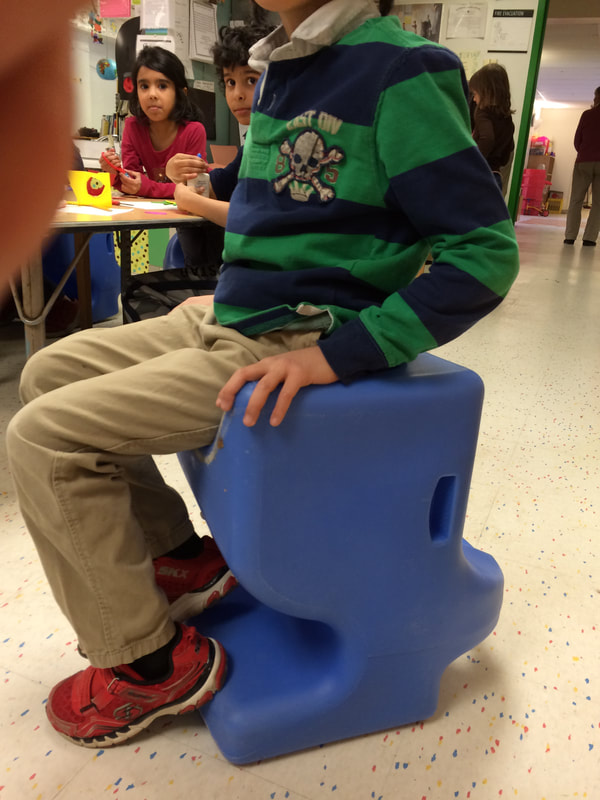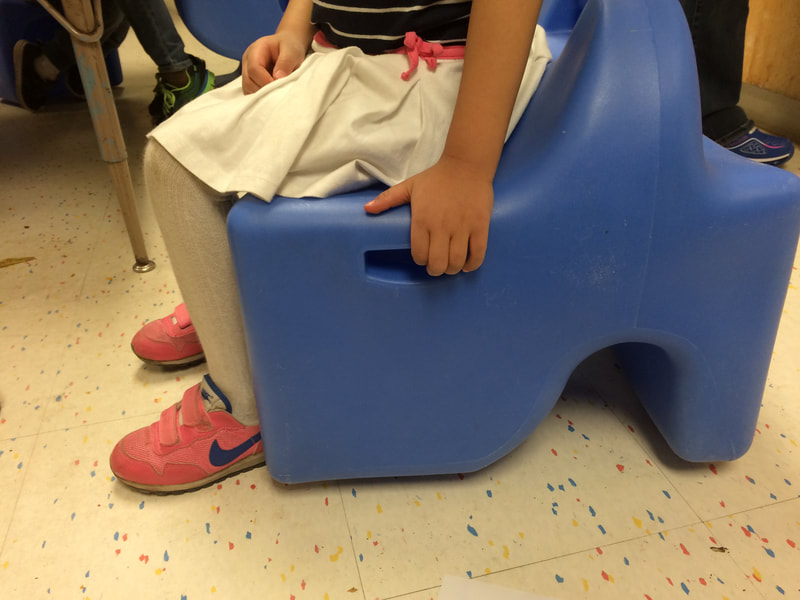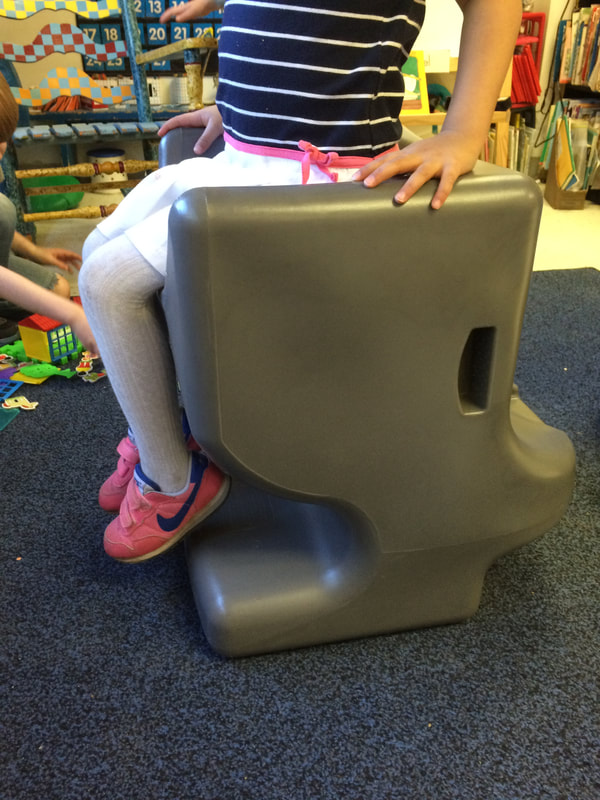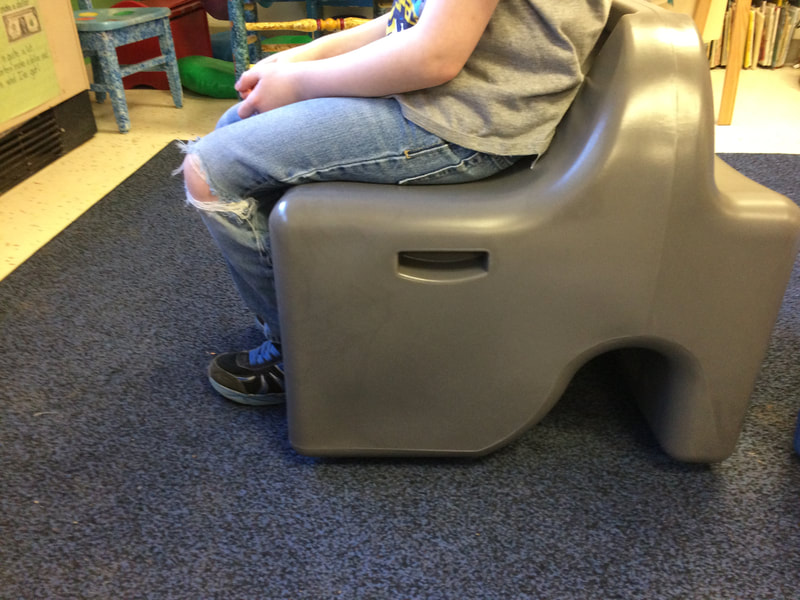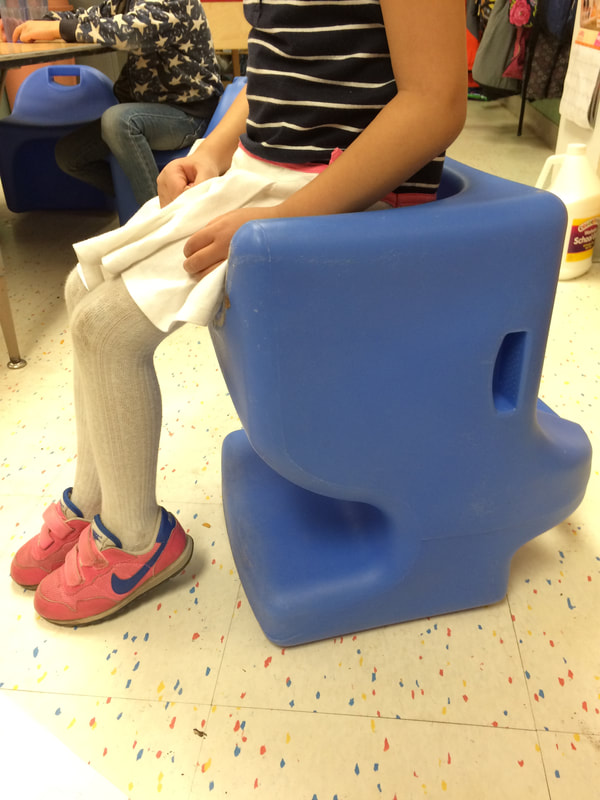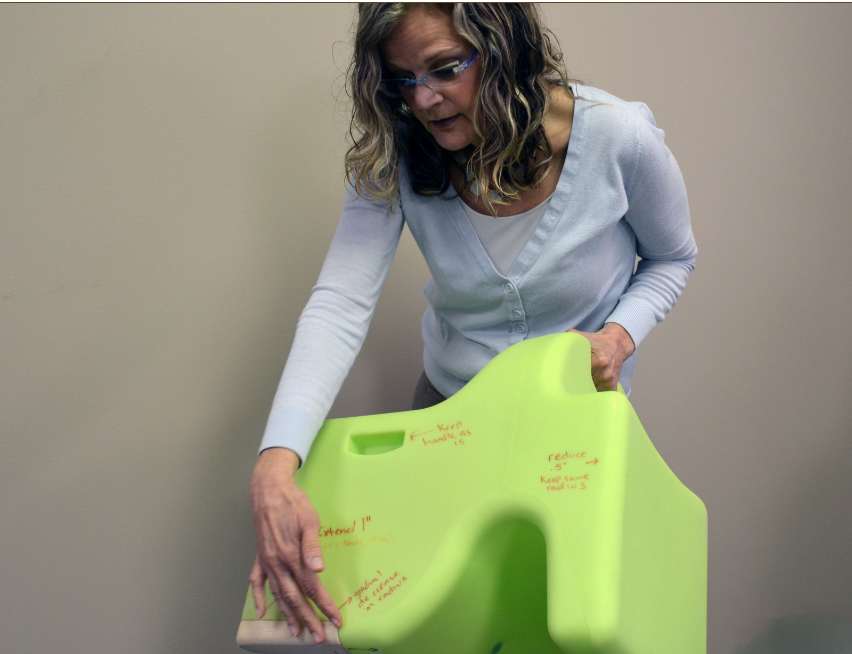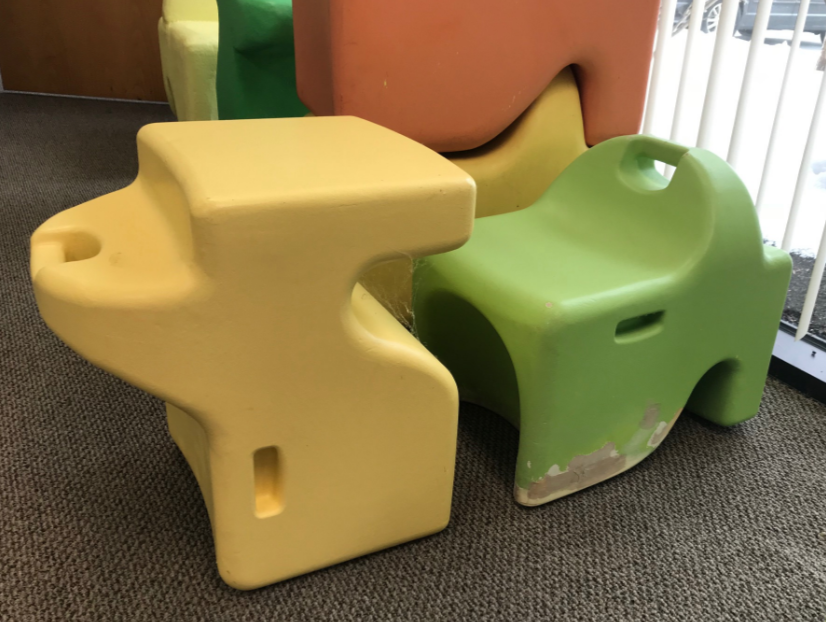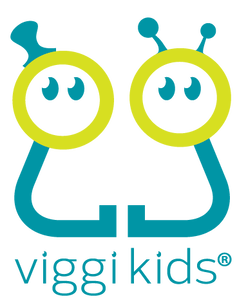Inspiring Natural Movement - Vidget Story
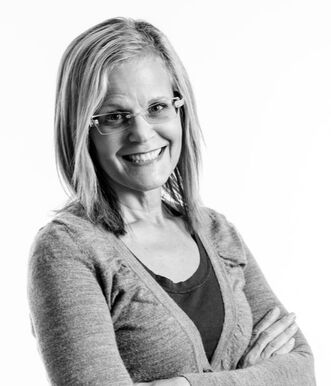 Sandra Turner, Vidget Inventor
Sandra Turner, Vidget Inventor
In 2008, I left a full-time "stable" job to join RIT as a graduate student in the MFA Industrial Design Program. After spending 20 years struggling to find where I "fit in" - I finally felt at home. Ever since I was a young child, I was a bit frightened of my intuitive nature. My natural hyper-focused observation skills would predict outcomes that would often come true. Without guidance or direction for my intuitive nature, I was left to think I had "special powers" - :) which often was a blessing and a curse. I'm a natural problem solver, ideas pop in my head without asking for them, and I didn't know what to do with the ideas. When I stepped into the industrial design department at RIT and learned more about the career, I found a "place" to allow my intuition and ideas to be free and come to life. And I am forever grateful for the support from the RIT Community both as a student and business owner.
As part of my MFA program, I had to decide on a thesis topic. This was not an easy task given all the possibilities. After much exploration (and my thesis advisor telling me to "land the plane"), I decided to focus on designing - and most importantly - inspiring a natural system of movement in the classroom. So what does this mean? Read on below and to learn more and/or download my thesis: Classroom habitat: Natural system of movement
As part of my MFA program, I had to decide on a thesis topic. This was not an easy task given all the possibilities. After much exploration (and my thesis advisor telling me to "land the plane"), I decided to focus on designing - and most importantly - inspiring a natural system of movement in the classroom. So what does this mean? Read on below and to learn more and/or download my thesis: Classroom habitat: Natural system of movement
Our bodies naturally need to move ...

When you look at this picture does it bring back memories of cold, hard and uncomfortable chairs that were too small or too large? Do you get a sense of feeling tethered, confined, and not able to move in fear of getting punished? I definitely do. As a young student in elementary school, I remember feeling confined, trapped and limited in school. I had so many ideas, questions, and my imagination was wild, yet I was told to “sit down, be quiet and not to move.” This conflict between natural needs and the demand for control in the classroom was like a tug-a-war inside of my soul. I remember being very distracted, frustrated and, what teachers called back then, a “satisfactory & fidgety” student. Who wants to be “satisfactory?” I wanted to be great, express myself and share my ideas and imagination; I instinctively needed to be creative, but the classroom demands took precedence over mine.
I felt like I was different because my body needed to naturally move. And still today, this same experience continues in classrooms. It is like time has stood still in the classroom. There are new textbooks, teaching techniques, paint on the walls, and blinds; but yet, it’s still the same. Teachers use many of the same objects originally designed in the 1800's while trying to make changes by using new classroom techniques, which is like using your iPad while driving your horse and buggy. Over the last few years, classroom design has made a shift to celebrating movement and flexibility. The term "flexible seating" has started to shift the thinking of "sit still" to "freedom to move" which is at the very core of the Vidget design concept.
Natural Systems = New Possibilities
Through the design thinking process of the Vidget, I explored the natural movement systems outdoors and the possibilities of having the same feeling in the classroom. Could the classroom objects take on a “life” that inspired natural movement as we find in nature; like the child digging in the ground searching for new possibilities, the freedom of birds soaring in the sky or the sand castles that take on a new shape with every ebb & flow of the waves?
This curious spirit is at the very heart of the Vidget® design concept. At it's core, the Vidget helps to uncover and inspire a balance between the demand for control and need for nature in the classroom to allow freedom in learning, growth and change; which I've termed "Classroom Habitat." It challenges and argues that schools need to stop trying to adapt new pedagogical approaches to traditional classroom design and look beyond the possible into the unknown to find new solutions. Henry Ford once said, "If I had asked people what they wanted, they would have said build me a faster horse." The Vidget design investigates solutions to providing the "feeling of nature" in the classroom environment. "When students are in harmony with nature, they feel comfortable with themselves. When they feel welcomed by a classroom's ambiance, they enter eager to learn" (Renee, 2004, p. 5). To learn more about the Vidget invention, read and download my thesis, Classroom habitat: Natural system of movement
This curious spirit is at the very heart of the Vidget® design concept. At it's core, the Vidget helps to uncover and inspire a balance between the demand for control and need for nature in the classroom to allow freedom in learning, growth and change; which I've termed "Classroom Habitat." It challenges and argues that schools need to stop trying to adapt new pedagogical approaches to traditional classroom design and look beyond the possible into the unknown to find new solutions. Henry Ford once said, "If I had asked people what they wanted, they would have said build me a faster horse." The Vidget design investigates solutions to providing the "feeling of nature" in the classroom environment. "When students are in harmony with nature, they feel comfortable with themselves. When they feel welcomed by a classroom's ambiance, they enter eager to learn" (Renee, 2004, p. 5). To learn more about the Vidget invention, read and download my thesis, Classroom habitat: Natural system of movement
Our Mission is Driven by Happy Smiles
With a foam prototype back in 2014, we secured our first investment from a person that could also relate to being told to "sit on his hands" as a student. Dick Kaplan, Viggi Champion and Board Chairman, is our biggest supporter of designing for ALL children with careful attention to NOT stigmatizing children who have a higher sensory need for movement and tactile input. With his help, we were able to secure additional funding from RIT Venture Fund, Excell Partners, and other private investors dedicated to improving the educational environment for our children.
Our goal for the Vidget, was and will always be, to provide benefit for all students, knowing that the students who need it the most will not be singled out as the "kid with the special chair." Providing options for all students in the class help children find what works best for their individual needs. We are driven by happy smiles.
Our goal for the Vidget, was and will always be, to provide benefit for all students, knowing that the students who need it the most will not be singled out as the "kid with the special chair." Providing options for all students in the class help children find what works best for their individual needs. We are driven by happy smiles.
Vidget Invention Timeline
Sandra Turner designed the form of the Vidget (then called "Fidget")as part of her Industrial Design MFA Thesis Research at Rochester Institute of Technology in Rochester, NY. Her Thesis, Classroom Habitat, Inspiring Natural Movement, was centered around finding the balance between control and human nature needs in learning spaces and inspiring the body to move naturally for improved attention, focus and academic performance.
Transforming space and proving flexibility to change space based on the changing classroom needs inspired her to "play" with the form leading to the
3-in-1 features of "fidget" seat, stool and desk - all in one form!
Transforming space and proving flexibility to change space based on the changing classroom needs inspired her to "play" with the form leading to the
3-in-1 features of "fidget" seat, stool and desk - all in one form!
2011: Vidget form comes alive
Ideation Sketches
Clay 3D models allowed Sandra to work out design elements before creating a working prototype.
2012: Thesis Show prototypes - adult size to demonstrate fidgeting and modular 3-in-1 concept. Made of blue foam and glue with many hours of carving and sanding - handcrafted by Sandra Turner
2012: Core77 Product Design Winner
Core77 awards Sandra Turner with Furniture Design Award.
Sandra submitted the Vidget concept to the Core77 Student Product Design Contest. Jurors shared that "Instead of a more traditional table or chair, I like the idea of using this in different ways, especially for children of kindergarten age." – Defne Koz
This award fueled Sandra to keep going and refine the design more. Shown in image below are 2 foam prototypes created to do live testing with students and teachers to work through the ergonomics of the dimensions and rocking motion.
Sandra submitted the Vidget concept to the Core77 Student Product Design Contest. Jurors shared that "Instead of a more traditional table or chair, I like the idea of using this in different ways, especially for children of kindergarten age." – Defne Koz
This award fueled Sandra to keep going and refine the design more. Shown in image below are 2 foam prototypes created to do live testing with students and teachers to work through the ergonomics of the dimensions and rocking motion.
2012: Provisional Patent Approved
Added Sensory Bumps
During one of Sandra's meetings with a Special Education Teacher, she learned that many teachers put velcro underneath tables and chairs and she thought ... mmmmm ... how can we add this tactile input into the Vidget? Sandra decided to cut in side handles and add the bumps up on top of the cutout so that it was intuitive and discreet for students who need the sensory input the most. Shown below is foam prototype with photoshop rendering of bumps to show the concept (before making molds).
Early Prototypes - Marketing & Testing in childcare setting
2014: First Vidget is born!
We met our co-founder and first investor, Dick Kaplan, at an RIT Board of Trustees Meeting. After learning about what we were trying to accomplish with the Vidget, especially the non-stigmatizing of special education students, Dick decided to invest and help Viggi to manufacturer the Vidget.
2015: RCSD buys 436 Vidgets and 166 Digit Widgit Kits
Rochester City School District's Early Childhood Executive Director, Robin Hooper, purchased more than 400 Vidgets for pre-k classrooms. Robin shared with the Rochester Business Journal:
“We have to start thinking more about the kinds of things we create for children and their uses, and are we really catering to their needs,” Hooper said. “With these products that is what they did; they put the focus on children and their needs and tried to create products that really cater to those needs.” Robin Hooper
2015 - 2016: testing & feedback
Official Patent Issued!
We sold about 1,000 Vidgets between end of 2015 through mid 2016 and conducted extensive testing. Through observation, testing measurements and gaining feedback from from Occupational Therapists, Special Education Teachers and General Education Teachers, we made minor modifications to the design.
Dick Kaplan was instrumental with helping us to build our Board of Director's Team: RIT's Venture Fund, Jim Brush, Michael Cooper, Theresa Mazzullo - Excell Partners, and Ron Papa.With the expertise and additional funding, we were able to conduct testing, refine the design and work on the molds for all 5 sizes.
Dick Kaplan was instrumental with helping us to build our Board of Director's Team: RIT's Venture Fund, Jim Brush, Michael Cooper, Theresa Mazzullo - Excell Partners, and Ron Papa.With the expertise and additional funding, we were able to conduct testing, refine the design and work on the molds for all 5 sizes.
January 2017 - 5 molds completed: toddler - teen/adult
What an exciting day when the first 10" Toddler Vidget arrived in the office!
2017 - 2022
|
Vidgets Sold
|
States
|



